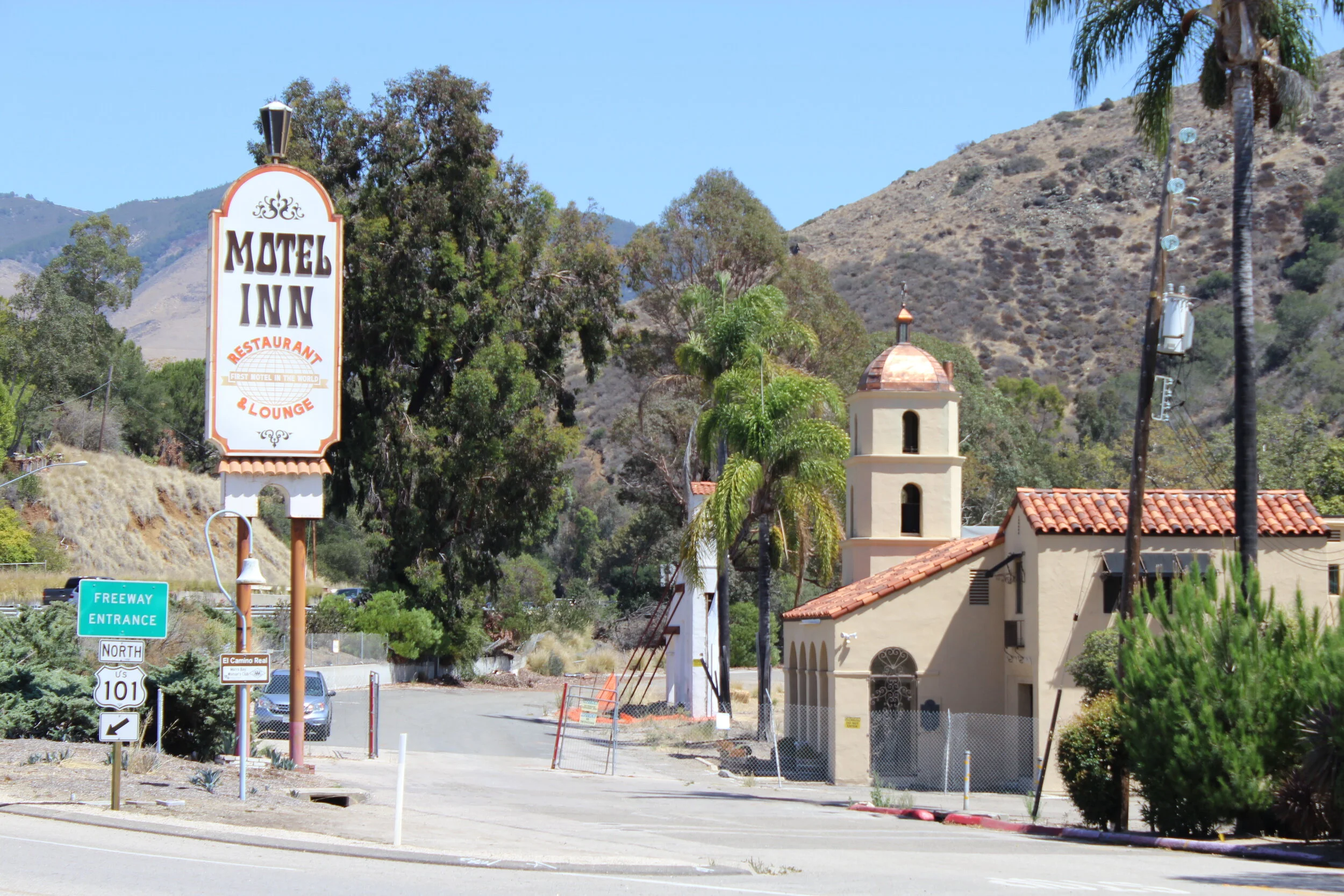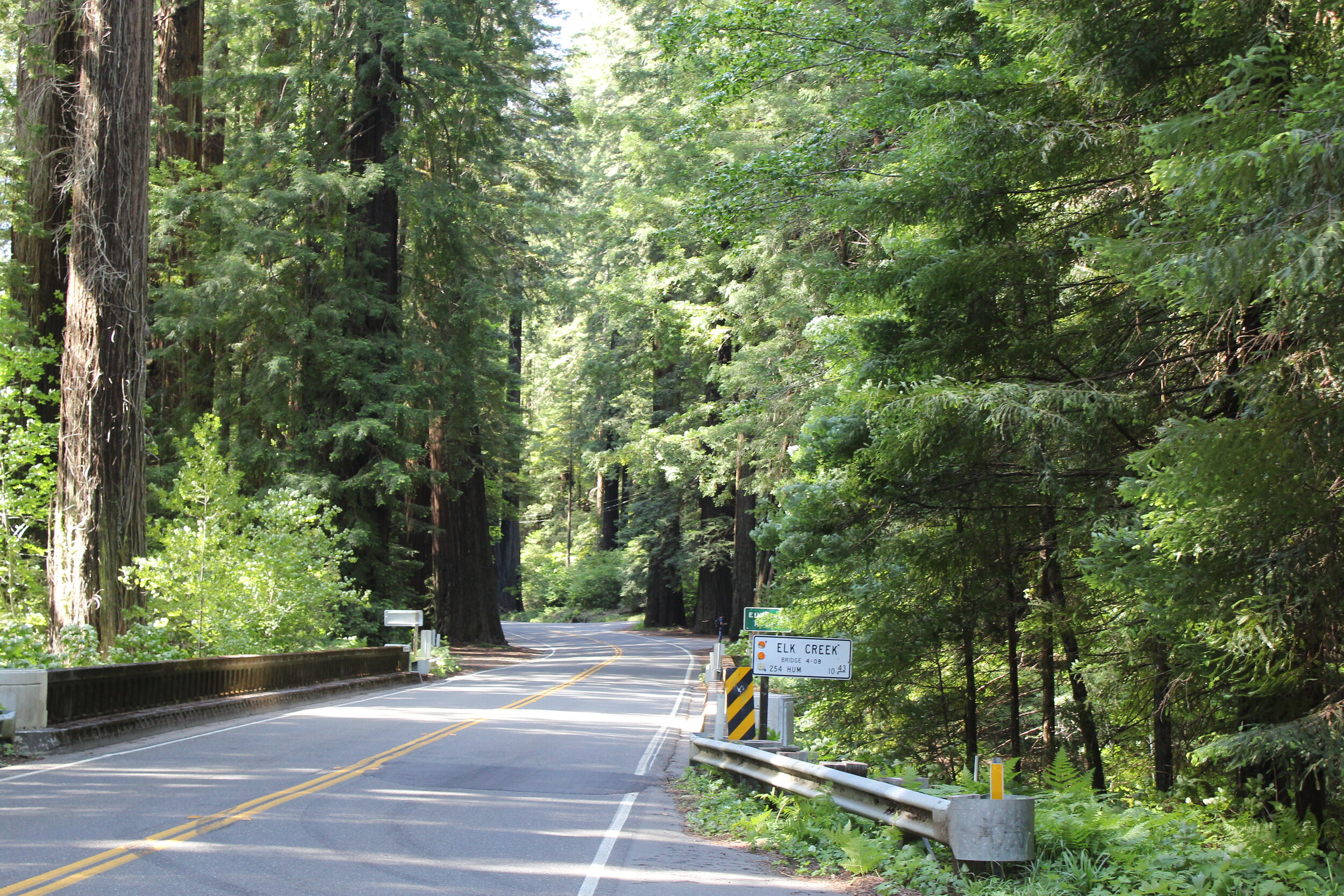There's so much to see along Highway 101 that I wrote a book
Stephen H. Provost
Note: “Highway 101: The History of El Camino Real” is the second in my series, “California’s Historic Highways.” Both books are available on Amazon, in bookstores and other retail outlets, or through the publisher, Craven Street Books.
Why write a book on Highway 101? What makes this particular road special?
The reasons are partly historical and partly personal. I spent six years living a few miles from the Ventura Freeway portion of the 101 in Woodland Hills as a boy and young teenager. My parents would drive me to Dodger Stadium for ballgames, or to go bowling at Corbin Bowl and dinner at a Mexican restaurant called El Torito on Ventura Boulevard.
When we moved to the San Fernando Valley in 1972, we stayed at a motel called the Aku Aku as we prepared to move into our new home. It was on Ventura Boulevard, too.
It wasn’t until many years later that I learned this busy thoroughfare had been part of Highway 101 before the freeway went in. There are still signs at some points that mark it as “Business 101.”
I moved away from Woodland Hills when I was 15 years old, but I reconnected with Highway 101 when I took a job in San Luis Obispo County in 2012, moving within a few miles of the Cabrillo Highway segment of 101. It was just a couple of turns and maybe a quarter-mile from where I lived in Arroyo Grande. For the next few years, I used the highway every day to get to and from my job at the San Luis Obispo Tribune.
Later, when I worked at The Cambrian newspaper up the coast, I drove every day along State Route 1, the Pacific Coast Highway, which shares signage with 101 in several places, including a stretch between Pismo Beach and San Luis Obispo. In 2017, when a massive mudslide sent a stretch of Highway 1 tumbling into the ocean below, I covered the story for The Cambrian and Tribune.
Ventura Boulevard in the San Fernando Valley.
Driving the highway
That same year, I started exploring Highway 101, taking trips — and photographs — up and down the length of the highway in California, from the Mexican border up to Eureka. I’d taken similar trips while working on a book about Highway 99 through the heart of the state, and what I found along 101 was no less fascinating.
U.S. 101 was, like 99, a major north-south route filled with history, one that helped connect and define California in the 20th century. Both were part of the first federal highway system, founded in 1926, and 101 still bears the black-bordered white shields with black lettering that mark it as a federal highway. (U.S. 99, by contrast, became a state highway in California during the 1960s, with the advent of a new interstate system, marked with red-and-blue shields).
Highway 101 was based in part on the old Spanish mission trail, El Camino Real, and passes through more varied and beautiful territory than any other highway in the state: the majestic Redwood Highway in Northern California, the scenic Central Coast, the former citrus groves of Orange County, then surfside to San Diego. The Ventura and Hollywood freeway sections are both iconic in their own right.
U.S. 101 from the air, near Shell Beach on the Central Coast.
101’s path
The 21 old missions tie U.S. 101 together from San Diego de Alcala in the south to San Francisco Solano in the north, binding the highway together historically. In some places, the highway is a two-lane country road. In others, like the Los Angeles area, it’s a multilane modern freeway.
Still other sections run through cities that were little more than wayside stops when the highway was built. In San Diego County, it still reflects the sun-and-surf culture along a segment between Oceanside and San Diego that parallels its “replacement,” modern Interstate 5. There, it passes historic movie theaters, the iconic Del Mar racetrack, and of course the Pacific Ocean.
Old 101 was replaced by Interstate 5 south of south of Hollywood, but it follows the same course past Disneyland and Knott’s Berry Farm. In Hollywood, it diverges again northbound into the heart of Los Angeles, then curves westward in the San Fernando Valley, through aging suburbs birthed with water drawn from the Owens Lake in the early 20th century.
It continues west along the coast past Ventura and Santa Barbara, through the old Summerland oil fields, offering views of the Channel Islands along the way, before heading north again across rolling green hills, then up through the lettuce fields of the Salinas Valley. Then it’s north to the Golden Gate and on to the redwoods.
The road, its sights and its history are as varied as the regions through which it passes.
Avenue of the Giants.
Highlights
During my travels, I saw a visited a number of fascinating places and learned a lot about the highway and its history. It would take a book to share them all (which is, I suppose, why I wrote a book!), but here are a few highlights.
Most beautiful drive: Avenue of the Giants, an old section of U.S. 101 that has been bypassed and its now signed as State Route 254. It runs for just over 31 miles through the towering redwoods — the “giants” — in Humboldt Redwoods State Park. Attractions include the 950-year-old Immortal Tree; the 370-foot-tall Dyerville Giant in the Founder’s Grove; and the Chandelier Tree, which is so wide at its base that you can drive through it.
Best meal: My wife and I couldn’t possibly visit even a small fraction of the eateries along the highway during our trips, and I’ll always have a soft spot for the original El Torito on Ventura Boulevard. (Unfortunately, it’s no longer there, but there’s a newer restaurant in the chain down the road in Sherman Oaks.) Then there’s Pea Soup Andersen’s in Buellton, which has been serving my favorite flavor of soup since 1924. But in my most recent travels, the prize goes to a delicious hamburger lunch at the Benbow Inn. The beautiful and historic hotel was built in Garberville in 1926, the same year the highway was dedicated, and it’s worth a visit even if you don’t have time for lunch.
Benbow Inn dining room, Garberville.
Most famous sites: The Golden Gate Bridge funnels traffic from U.S. 101 in San Francisco north to Marin County, and vice versa. When it opened in 1937, it was the longest and tallest suspension bridge in the world, and remains the most recognizable in the nation, even adorning the uniforms of the NBA’s Golden State Warriors. Disneyland opened along a section of U.S. 101 that later became part of Interstate 5, and you can still see its Matterhorn ride from the freeway as you pass by.
Quirkiest attractions: Confusion Hill, a roadside stop that opened in 1949, features a “gravity house” that creates optical illusions, a mountain train and a giant totem pole. Madonna Inn in San Luis Obispo offers themed guest rooms and suites with names like the Caveman Room and the Golfer’s Room. There are giant statues of Paul Bunyan and Babe, the Blue Ox at the Trees of Mystery attraction in Klamath.
Revisiting the past: Beyond the 21 Spanish missions built between 1683 and 1834, there’s the first roadside inn ever to be labeled a “motel”: The Motel Inn in San Luis Obispo, originally known as the Milestone Mo-Tel. The motel closed in 1991 and most of it has been demolished, but the mission-style bell tower and motel sign remain. The 101 Café in Oceanside, with a fifties-style nostalgic feel, was actually built far earlier, in 1928. And there’s a now-abandoned, ornately decorated service station on old 101 in Goleta that was shelled in the only Japanese attack on the mainland during World War II.
View from the San Juan Grade.
The road itself: Traveling the highway became a scavenger hunt of sorts, as I searched for old sections of the road that had been bypassed or abandoned. The San Juan Grade, a winding section of road across the mountains between the Salinas Valley and San Juan Bautista, is still open to traffic and offers a glimpse of what the road looked like in the 1920s, though the highway itself has long since bypassed it, in favor of a more direct route. You can still walk out onto abandoned viaducts along the Eel River and past Confusion Hill, and you can explore sections of the old concrete road below the modern Cuesta Grade, just north of San Luis Obispo. Business routes that precede the present highway pass through many cities and towns along the way.
If you’re thinking about traveling U.S. 101, there’s plenty to see. My book not only explores the history of the road, but provides a tour of the highway. It’s illustrated with numerous pictures in color and black and white. If you enjoyed my book on Highway 99, I know you’ll like this one, too. Both are also available on Kindle.
All photographs by the author.





